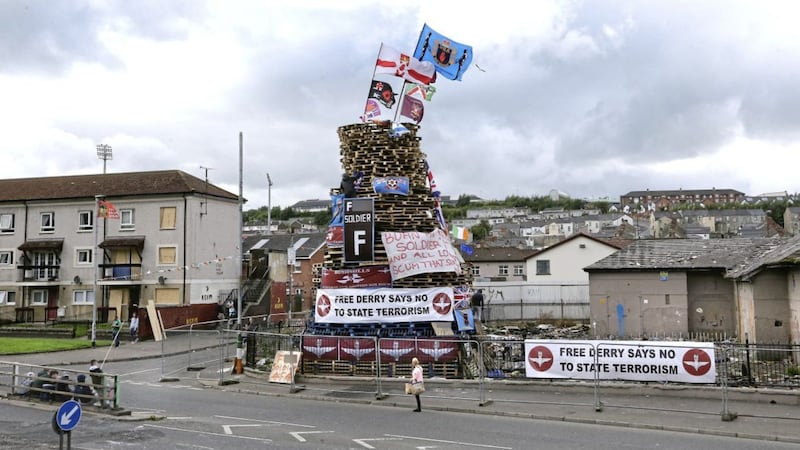WE ARE less than a month away from bonfire and marching season here in Northern Ireland, a time when all our quirks, frustrations and emotions revolving around identity traditionally come to the surface.
When I'm explaining this place to foreign news crews who come to work with me, I point to this time of the year as when our wound is raw. In July and August – bonfire building and burning season – the plaster is ripped off our collective wound and it's left to fester until a new plaster is placed on it in September to hopefully last the year.
Everyone has a different view of bonfires. Many young people enjoy collecting and building them. They love the camaraderie involved in the process, it gives them a purpose, something to be part of, something to be proud of.
Some people hold them dear as cherished cultural traditions their fathers and grandfathers and great grandfathers took part in. Some people see them as a reflection of community frustrations, a place where they can visually express hatred for their perceived enemies, those who they feel have hurt their communities.
There are those who think bonfires are repulsive expressions of hate and should not happen. As with everything in this place, nothing is simple and there are dozens of differing opinions, all of them wrestling ferociously to be right.
So, we know that unionists light their bonfires on the 11th night to mark the Battle of the Boyne when the Protestant King William of Orange – King Billy – defeated the Catholic King James II. And we know that nationalists light theirs on the 15th of August to mark the Catholic feast of the Assumption, marking the Virgin Mary's death. These traditions go back to the 18th century, but the bonfires of old and the modern ones, I would imagine, are radically different.
Fires are also lit on August 9th to mark internment, a more modern addition to the bonfire calendar.
Our July bonfires are traditionally adorned with anti-Catholic symbols. The flags Catholics hold dear are set alight alongside the posters of politicians. Boards and bed sheets are painted with derogatory remarks about, say the grieving Ballymurphy or Bloody Sunday families, and slogans such as 'KAT' – 'Kill All Taigs' – are traditionally seen on some pyres. At times, the tradition is also to hang an effigy from the bonfire by a noose, usually a republican figure of hate.
In August we will see bonfires lit in Catholic areas. Massive structures will be built and adorned with the flags Protestant people hold dear. They will burn poppy wreaths, and Somme banners and perhaps boards and bed sheets with insulting and offensive messages on them, traditionally featuring the names of murdered police officers to hurt grieving families. At times, effigies of loyalist figures of hate are traditionally burned like witches at the stake.
Sometimes the tradition is to place these bonfires at interface areas, to stoke up tension further and cause distress to neighbours.
Traditionally families gather around these fires to cheer and clap, telling themselves they are celebrating the culture but detaching themselves from the hateful messages that are burning in front of their eyes.
When I explain these traditions to people outside of this place they are utterly astounded that our society allows these expressions of hate to happen yearly. But then again, it does go some way to explain why we are so very 'different' here.
We have a wound here in Northern Ireland. And it's made up of cuts from every single murder, every attack, every atrocity, every lost life, every destroyed life and every heartache.
It weeps and isn't able to properly heal.
We stick a plaster over it most of the time, but then, every summer we violently rip it off and expose it to the elements for a few weeks. We hold it too close to the fire, we rub the ashes of hate filled placards and signs into it. We pick at it until it gets red and inflamed and then we stick the plaster back on and hope for the best, as is our tradition.
Maybe it's time we made new ones.








